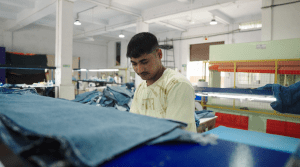Executive Summary
As sustainability continues to shape consumer preferences and business models, upcycling has emerged as a powerful strategy for brands to enhance their market position. This white paper explores the significant impact of incorporating upcycled products into inventory, focusing on how it affects consumer perception, brand loyalty, and sales performance. By repurposing materials and reducing waste, brands can not only attract environmentally conscious consumers but also differentiate themselves in competitive markets.
Introduction
In today’s consumer landscape, environmental awareness is a growing force that influences purchasing decisions. Brands are increasingly adopting sustainable practices to meet these expectations, and upcycling—repurposing waste materials into new products—has become a key strategy. Upcycled products appeal to eco-conscious consumers by offering unique, sustainable alternatives while reducing environmental impact. For brands, incorporating upcycling into their inventory offers more than just ecological benefits; it has profound implications for how consumers perceive the brand, their loyalty to it, and ultimately, the brand’s bottom line.

Consumer Perception and Upcycling
Consumers today are more attuned to the environmental consequences of their purchasing decisions. Brands that incorporate upcycled products are seen as innovative, responsible, and future-oriented. These brands can foster a positive perception by aligning themselves with values such as sustainability, creativity, and social responsibility. Upcycled products offer a tangible way for brands to demonstrate their commitment to reducing waste and conserving resources, which resonates with a broad demographic, especially Millennials and Gen Z, who prioritize ethical consumption.
In addition to environmental responsibility, upcycled products often carry a sense of exclusivity and creativity. The uniqueness of upcycled goods, which are frequently limited in availability due to the nature of their raw materials, can create a sense of novelty and desirability. This differentiation allows brands to cultivate a premium image, appealing to consumers who value individuality and sustainability.
Brand Loyalty and Customer Retention
Incorporating upcycled products into a brand’s inventory can also deepen customer relationships and foster loyalty. Brands that authentically embrace upcycling as part of their values can build trust with their customers, as these consumers are likely to return to brands that reflect their personal ethics. In fact, studies have shown that sustainability-focused brands often experience higher levels of customer retention, as consumers become emotionally connected to the brand’s mission.
Moreover, offering upcycled products can enhance a brand’s storytelling capabilities. When consumers understand the story behind upcycled items—how they were created from discarded materials and given new life—it adds emotional value to the purchase. This narrative strengthens the customer-brand relationship, making consumers feel like they are contributing to a larger cause. As a result, brands can develop more loyal customer bases, with advocates who not only return to purchase but also recommend the brand to others.

Sales Performance and Market Differentiation
From a sales perspective, upcycling offers brands a competitive edge. The uniqueness of upcycled products, coupled with growing consumer demand for sustainable options, can lead to increased sales and higher profit margins. While consumers may be willing to pay a premium for these items due to their eco-friendly nature, the cost of materials for upcycled goods can often be lower than traditional products, resulting in a win-win for both brand and customer.
Additionally, the integration of upcycled products into a brand’s inventory can open new market opportunities. Brands that commit to sustainability can attract new customer segments that prioritize ethical consumption, thus expanding their reach. By marketing upcycled products as not just eco-friendly but also fashionable and innovative, brands can appeal to consumers who might not otherwise engage with sustainability-focused products.
Conclusion
The impact of upcycling on brand perception and sales is undeniable. Incorporating upcycled products into a brand’s inventory enhances its image, builds customer loyalty, and drives sales performance by aligning with the values of today’s conscious consumers. Brands that embrace upcycling can differentiate themselves in an increasingly competitive marketplace by offering innovative, eco-friendly products that resonate with a growing segment of sustainability-minded consumers.
At the Bank & Vogue group of companies, BVH services is our dedicated circular fashion division, where we actively work to reduce the environmental impact of the fashion industry by taking discarded clothing and textiles and transforming them into new products. We ensure that fashion evolves beyond being a fleeting trend. Instead, we create a continuous, sustainable cycle that not only reduces waste but also conserves valuable resources, promoting a more responsible and forward-thinking approach to fashion production. This commitment to circularity allows us to contribute meaningfully to the future of fashion while meeting the growing demand for sustainable solutions.







